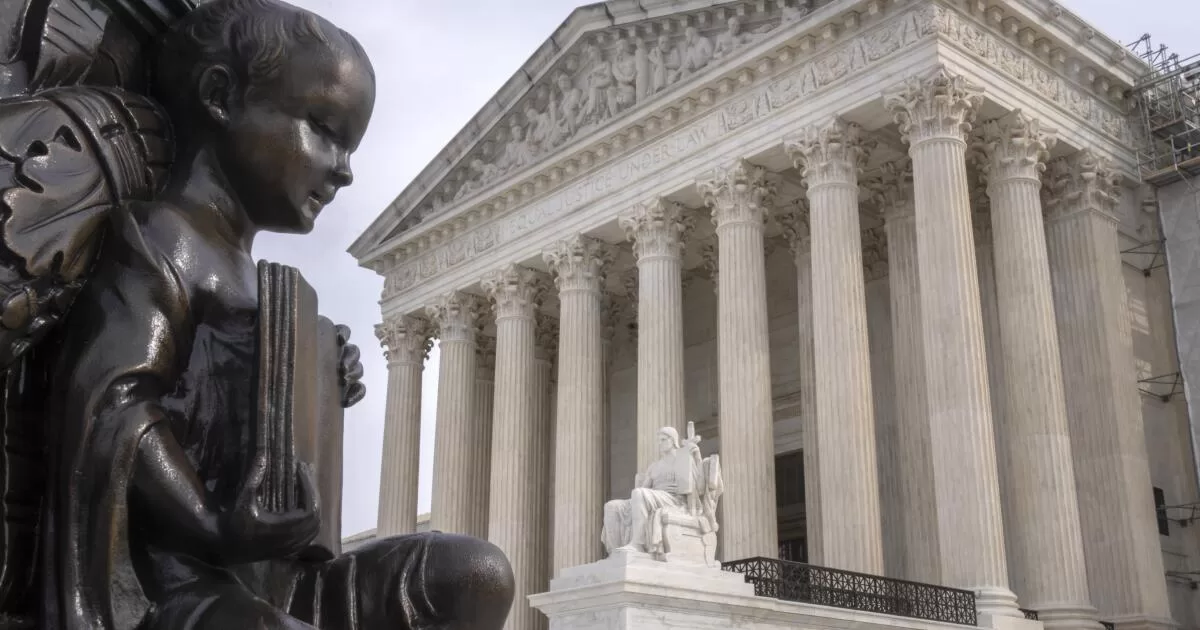President Biden has told progressives in Congress that he will soon endorse proposals to reform the Supreme Court, including by putting term limits on the justices and enforcing an ethics code.
He also spoke in favor of a proposed constitutional amendment that would overturn the immunity for presidents that the conservative Supreme Court granted two weeks ago, according to media reports Wednesday.
But the president apparently still remains opposed to expanding the court from nine to 13 justices.
If Democrats were to win control of the House and Senate in the November elections and Biden were reelected, some or all of these legislative proposals could move forward early next year. But that outcome appears increasingly unlikely.
So Biden’s proposed reforms for now remain largely political talking points for Democrats and progressives.
Nevertheless court reform advocates welcomed Biden’s show of support.
“The court has long been the most powerful, least accountable part of our government, and you can’t ensure the long-term success of our democracy without implementing changes to our all-powerful and unaccountable juristocracy,” said Gabe Roth, executive director of Fix the Court, an advocacy group for court reform.
“The vast majority of the country, regardless of party, believes the justices should not serve for life but they should be subject to basic oversight like Congress and the executive are,” Roth said.
For the past decade, term limits has been a popular idea for many Republicans and, more recently, most Democrats.
The Constitution say justices, once appointed, “shall hold their offices during good behavior,” which has been understood to mean they have lifetime terms.
Justice Clarence Thomas, the court’s longest-serving current member, won a Senate confirmation on a 52-48 vote in October 1991 and has now served through the terms of six presidents.
The life-tenure rule for justices can also lead to uncertain and arguably unfair transfers of power with lasting consequences.
Justice Ruth Bader Ginsburg died in September 2020, just before President Trump lost his reelection bid. But it was time enough for Senate Republicans to fill her seat with 48-year old Justice Amy Coney Barrett, who cast a deciding vote to overturn Roe vs. Wade on abortion.
While Presidents George W. Bush and Barack Obama won two terms as president and each made just two appointments to the high court, President Trump added three justices in his four-year term.
A decade ago, Republicans were in favor of term limits, and Democrats were wary, Roth pointed out. In 2015, Sens. Ted Cruz (Texas) and Marco Rubio (Fla.) were seeking the Republican presidential nomination and called for term limits for the Supreme Court justices.
“Liberals were nowhere on the scene. They criticized it as ‘trying to term-limit Hillary’s appointments,’” Roth said. But since the Supreme Court gained a 6-3 conservative majority, Democrats have championed term limits for the court.
The term-limit proposals, if enacted, would give each new justice a single 18-year term on the Supreme Court. And each president could appoint two new justices during a four-year term in the White House.
If such a bill were to become law, a newly elected President Biden or President Trump would be authorized to appoint a new justice in 2025 and a second new justice in 2027.
Proponents say this system would be more fair and more predictable.
But the term-limit proposals differ on what happens once a new justice is appointed. Senate Democrats propose that the senior member of the court — in this instance, Thomas — would become a “senior justice retired from active service.” He could fill in on occasion if another justice were recused from deciding a case.
Such a plan would surely be challenged as unconstitutional. While Congress may by law change the number of justices on the court, it is not apparent they could repeal the life-tenure rule for current justices.
Other term-limit proposals would add new justices to the court without requiring the older justices to retire. For example, a newly appointed justice could join the court in 2025, giving the court 10 justices in all.
Proponents of this approach say it has a much better chance of being upheld as constitutional.
Biden has not said which approach he plans to endorse.
It’s also unclear what ethics rules can be written into law. Congress could set new rules for hearing complaints involving the justices.
The Supreme Court said it had adopted a code of conduct for the nine justices, but those rules have no outside enforcement. Moreover, some of the justices have said that Congress cannot impose its rules on the court.
